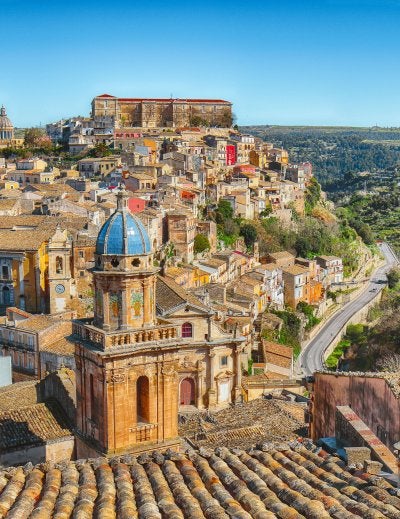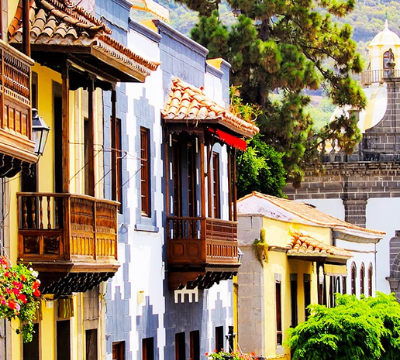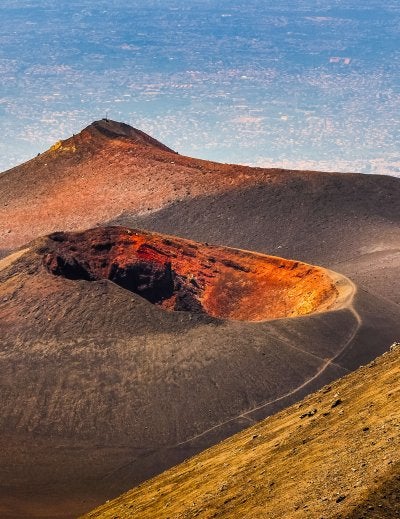
Ancient Theatre of Taormina: A Detailed Travel Guide
The Ancient Theatre of Taormina, or Teatro antico di Taormina, is one of Sicily’s most extraordinary archaeological landmarks. Set high above the Ionian coast in the hilltop town of Taormina, this ancient structure combines history, architecture and breathtaking scenery. It’s the second-largest ancient theatre in Sicily, after the one in Syracuse, and remains a highlight for anyone exploring the many things to do in Sicily.
Historical Background
The theatre was built in the 3rd century BC during the Hellenistic period, probably under Hiero II of Syracuse. Originally designed by the Greeks for dramatic performances, it hosted tragedies and comedies by playwrights such as Sophocles and Aristophanes. These performances were deeply rooted in community life and often staged during religious festivals.
Under Roman rule, the theatre was rebuilt and expanded, likely during the reigns of Emperors Hadrian or Trajan. The Romans adapted the orchestra area for gladiatorial games and animal fights, transforming the theatre into a venue for more spectacular forms of entertainment. By the 3rd century AD, the stage was removed, and the structure took on a more Roman appearance.
During the Middle Ages, parts of the theatre were reused to build private residences and religious buildings, including Taormina Cathedral. The site gained renewed fame in the 18th and 19th centuries during the Grand Tour, when travellers such as Goethe described the views from the theatre as some of the finest in Europe.
Architecture and Description
The Ancient Theatre of Taormina is celebrated for its blend of Greek design and Roman modifications. Its semicircular shape, known as a cavea, was carved partly into the rock of Monte Tauro and reflects innovative Hellenistic architecture. The structure is divided into three main sections: the scene (stage), the orchestra (central area), and the cavea (tiered seating).
- The Scene: Originally adorned with columns and statues, much of it has been lost over time. The missing central section now frames an unforgettable view of Mount Etna and the Bay of Naxos.
- The Orchestra: This was once a circular space where choruses and dancers performed. The Romans later enlarged it for gladiatorial contests and other public spectacles.
- The Cavea: The seating area could accommodate between 5,000 and 10,000 spectators. Carved into the hillside, it offers remarkable acoustics and panoramic views.
The theatre measures roughly 120 metres in length and 50 metres in width, with a height of around 20 metres. The lower sections were built with local Taormina stone, a material similar to marble, showcasing the skill of ancient Greek builders.
Setting and Views
The theatre’s location on Monte Tauro provides one of the most impressive settings of any ancient monument in Italy. Visitors are treated to sweeping views of the Ionian Sea, the Bay of Naxos, and Mount Etna in the distance. On a clear day, you can even see the Calabrian coast. The combination of sea, mountain and ruins makes it one of the most photographed sites in Sicily.
Visiting the Theatre
Location: Via Teatro Greco, 1, 98039 Taormina ME, Sicily, Italy
Getting There:
- On Foot: A short uphill walk from Taormina’s centre via Corso Umberto and Via Teatro Greco.
- By Car: Take the A18 motorway (Catania–Messina) and exit at Taormina. Limited parking is available nearby.
- By Train or Bus: From Catania, take a train to Taormina-Giardini, then a bus to the town centre. Direct buses also connect Taormina with Catania and Messina.
Opening Hours:
- January–February: 9:00–16:00
- March: 9:00–17:00
- April–mid-September: 9:00–19:15
- Late September–October: 9:00–17:45–18:45
- November–December: 9:00–16:45
Tickets: €17 per person. Tickets can be bought online or at the entrance.
Accessibility: The site is partially accessible, with ramps and adapted restrooms. Due to uneven surfaces, baby carriers are more practical than prams.
Facilities: There is a bookshop and souvenir shop on site. Food and drink are not allowed inside, and pets are prohibited except for service animals.
Recommended Visit Duration: 1–3 hours.
Best Time to Visit: Early morning or late afternoon, when the light is softer and the crowds thinner. On clear days, the view of Mount Etna is spectacular.
What to Expect
Visiting the Ancient Theatre of Taormina offers an extraordinary combination of history and natural beauty. Standing among its stone terraces, you can admire the same view that has inspired travellers for centuries. The site remains an active cultural venue, hosting the Taormina Film Festival and “Taormina Arte”, a summer programme featuring concerts, opera, ballet and theatre.
Even when no events are taking place, the atmosphere is captivating. The mix of ancient architecture, Mediterranean plants, and the view of Mount Etna and the sea creates a setting that feels timeless.
Lighting Project
A new lighting system was introduced in 2017 to allow evening visits and highlight the theatre’s architectural features. Designed by engineer Roberto Sannasardo, the system uses warm-toned LED lights to create an atmospheric glow while maintaining energy efficiency. The lighting gently illuminates pathways, steps, and the key structures of the theatre, enhancing the visitor experience after sunset.
In Popular Culture
The Ancient Theatre of Taormina has appeared in several films and television series, including Woody Allen’s Mighty Aphrodite (1995) and HBO’s The White Lotus (Season 2, 2023), both of which have helped renew global interest in Taormina as a destination.
Nearby Attractions and Tips
After visiting the theatre, spend time exploring Taormina’s historic streets and coastal scenery. Highlights include:
- Isola Bella: A tiny island and nature reserve reached by boat or cable car.
- Taormina Cathedral: A 13th-century Gothic church located in Piazza Duomo.
- Corso Umberto: The town’s main street, filled with shops, restaurants, and lively atmosphere.
- Piazza IX Aprile: A scenic viewpoint with panoramic views of the coastline and Mount Etna.
To get the most out of your visit, consider a guided tour or an audio guide to learn about the theatre’s history and remarkable acoustics. After exploring, enjoy a traditional Sicilian treat such as a granita al limone or a coffee from one of the cafés overlooking the sea.
FAQs
What is the Ancient Theatre of Taormina?
It is an ancient Greek theatre later remodelled by the Romans, located in Taormina, Sicily.
When was it built?
It dates back to the 3rd century BC, making it more than two millennia old.
Can I attend performances there?
Yes, the theatre hosts film screenings, concerts, opera and other live events, especially during the summer season.
What’s the best time to visit?
Morning or evening visits are ideal for cooler temperatures and better photography conditions.
What else is nearby?
Taormina’s public gardens, Isola Bella, and the historic town centre are all within easy walking distance.



